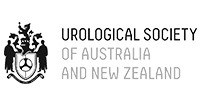Prostate Cancer Rehabilitation
Millions of men go through prostate cancer every year. Second only to skin cancer, it is the most common cancer among Australian men with over 24,000 given a positive diagnosis in 2022.
The good news is, there are now numerous ways to treat prostate cancer effectively, giving hope of a full recovery to the thousands diagnosed. However, like with many cancer treatments, some treatment has side effects that can impact the patient need considering in full before proceeding.
Just as the treatments have progressed, so too have the methods for dealing with the potential side effects, helping men return to living as they did before their diagnosis.
Here, we’ll explain everything you need to know about prostate cancer rehabilitation and what to expect after prostate is removed to live a healthy, happy life.
Rehabilitation After Prostate Cancer Treatment
Depending on the severity of the prostate cancer diagnosis, patients are given options to treat cancer accordingly. For instance, a low-grade diagnosis means the cancer is not yet aggressive and requires regular monitoring of its progress. A high-grade diagnosis means the cancer is already aggressive, with surgery recommended.
Radical Prostatectomy
Prostate cancer surgery – known as radical prostatectomy – is performed to remove any cancer in the prostate and the surrounding tissues and involves complete removal of the prostate, the seminal vesicles, and the associated lymph nodes.
Two main side effects result from a radical prostatectomy: urinary continence and erectile dysfunction.
While many suffer, these are uncomfortable and embarrassing side effects for anyone who succumbs to either one. Yet, with the right rehab after prostate removal, most patients can manage these conditions and go about their lives just as they did before their surgery.
Read more about prostate cancer treatment
Prostate cancer rehabilitation for urinary incontinence
Urinary incontinence occurs as a result of a weakness in the urinary sphincter valve, which forms part of the pelvic floor group of muscles. This type of side-effect is extremely common and may pass quickly – although for some men, it can pose a serious issue if not managed properly.
The medical processes to help fix urinary incontinence after prostate surgery are:
Pelvic floor training – when undertaken before and after surgery, this helps to strengthen the pelvic floor and reduce incontinence. In most cases, patients have full bladder control within three to six months of their surgery. Pelvic floor exercises are not recommended until after the post-operative catheter is removed (usually within 1-2 weeks).
Male sling surgery – this procedure sees a nylon ‘sling’ implanted under the urethra to prevent leaks. It is a relatively simple, non-invasive procedure that can usually be completed in a day clinic and has an 80% success rate.
Artificial inflatable urinary sphincter – this is required for more severe cases of incontinence or where the sling procedure is non-effective. The artificial sphincter has three main parts – a balloon reservoir in the abdomen, an inflatable cuff and a pump – with activation of the pump opening up the cuff and allowing the patient to urinate. Many severe incontinence sufferers have found a dramatic improvement when urinating, thanks to the artificial sphincter.
Read more about Urinary control
Managing Erectile Dysfunction After Prostate Cancer
Fortunately, most prostate cancer surgery is successful and comes with a high survival rate of 90%. However, while those who overcome the cancer go on to lead a regular and healthy life, many will experience changes to their body they perhaps were not expecting – erectile dysfunction (ED), in particular.
Some men say they have no erection after prostate cancer, while others experience a range of difficulties, including:
- Generating an erection spontaneously
- Finding penetration difficult
- Sustaining an erection through to orgasm
- Satisfying both partners adequately
For many patients, the after effects of prostate surgery like ED are temporary. Yet, each man is different, and age and overall health will have a bearing on the longevity and severity of their ED. Anybody experiencing difficulty in any of these areas, or changes in sensation or function after prostate surgery, is advised to seek proper medical treatment.
Since these issues have become common, modern prostate surgery techniques aim to deal with erectile dysfunction before it becomes a problem. Nerve sparing, for example, is a procedure where the nerves involved in erectile function are preserved during prostate surgery and reduces the risk of erectile problems occurring later. Yet for those who continue to experience erectile dysfunction after prostate cancer, several treatments exist.
Drug therapy – medications may be effective where a degree of nerve function is already present. These treatments work by increasing the blood flow to the penis and include oral treatments such as Viagra, other PDE-5 inhibitor drugs, and penile injections.
Vacuum constriction device or vacuum pump – a hand or battery-operated device designed to create a vacuum that increases blood flow to the penis.
Penile implant surgery – this option may provide a very effective long-term treatment, especially for more severe cases.
Read more about Erectile Dysfunction
A Broad Approach To Prostate Cancer Rehabilitation
Just as treatments have advanced in recent years, the mortality rates for prostate cancer have decreased, which is great news. Of course, curing patients is a priority but quality of life after cancer treatment is just as important. Men are encouraged to pursue a full rehabilitation programme to ensure the best possible outcomes for their physical and mental health.
As medical professionals working with cancer patients know, the rehabilitation process post-surgery is just as important as the treatment.
All medical processes aim to promote quality of life and prostate surgery is no different. And this involves much more than removing the cancer from the body. Post-surgery rehabilitation is equally important to patient health and wellbeing.
It takes a highly-skilled, wide-ranging team to deal with the prostate cancer itself – a GP, surgeon, medical oncologist and physician among them. It is critical rehab after prostate cancer takes a multi-discipline approach too.
What to expect after prostate is removed?
Depending on the patient and how they are feeling post-surgery, a number of medical professionals might be required to support their rehabilitation. A nurse or physio – someone to teach pelvic floor training, for example. A surgeon with an interest in urology to answer questions. A psychiatrist or sex therapist to address issues with urinary incontinence or ED.
But these are physical conditions, and patients likely require a professional to support them mentally too. The fear caused by having cancer may have left the patient with anxiety. Thinking about death, types of treatment or potential side effects can bear weight on the mind, and it requires a professional team to work through these to help the patient move on free from mental scars.
While side effects after prostate surgery are common, most last a short time – particularly when dealt with quickly by a skilled team.
As a professional urologist in Sydney, our medical team only wants good patient outcomes. The Katelaris Urology Prostate Cancer Rehabilitation Centre takes the physical and mental aspects of cancer into consideration when treating a patient and works transparently to create a course of rehab after prostate removal that suits their bespoke needs.
For more information about prostate cancer rehabilitation, contact our team.






